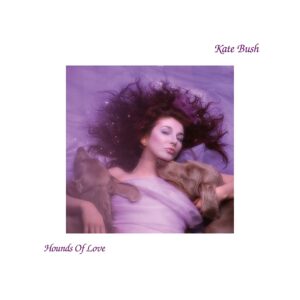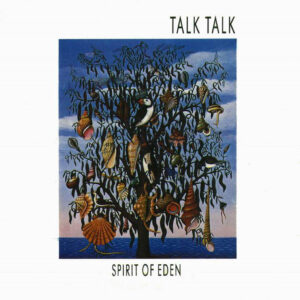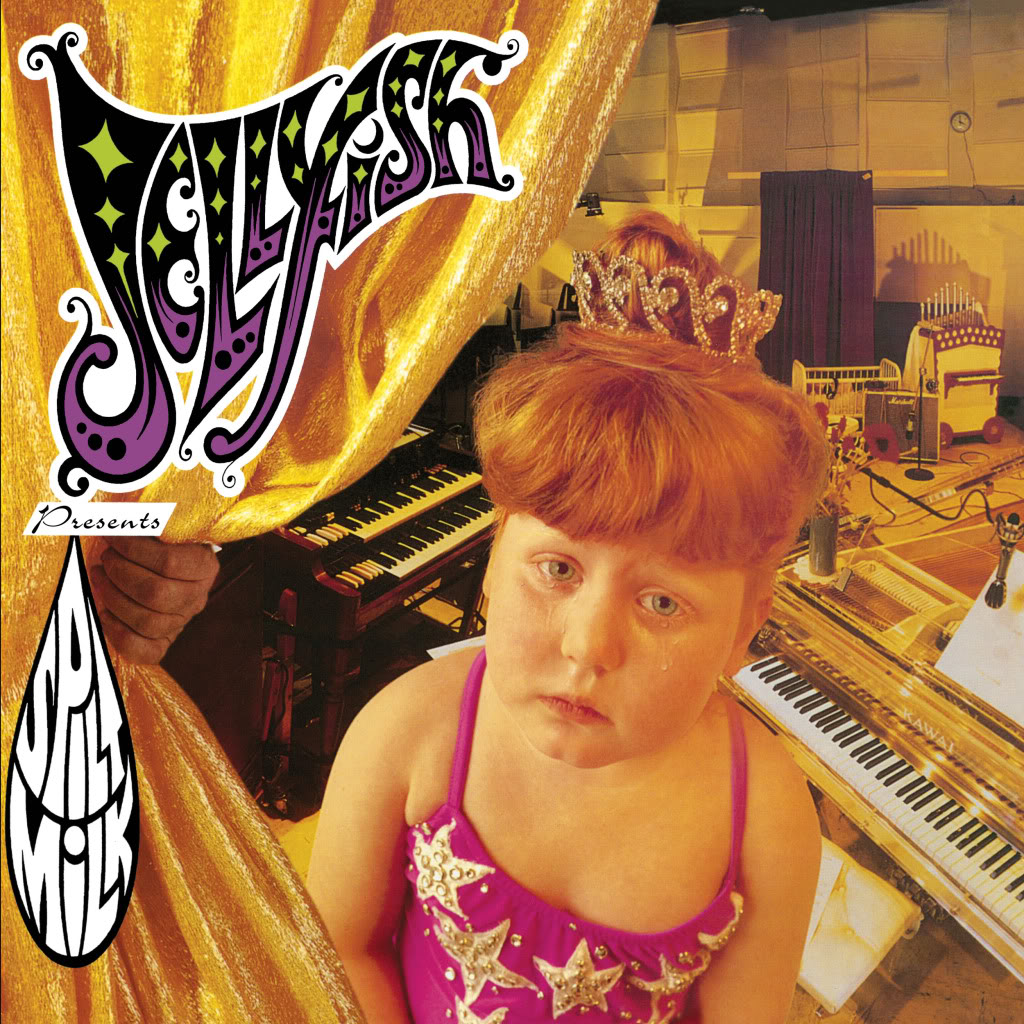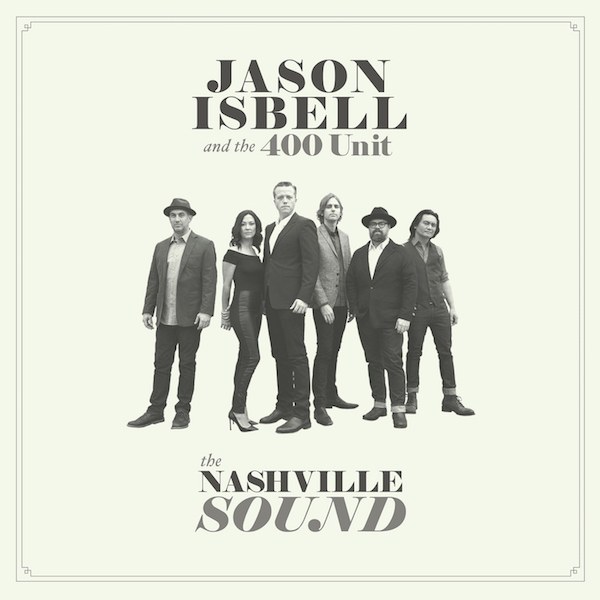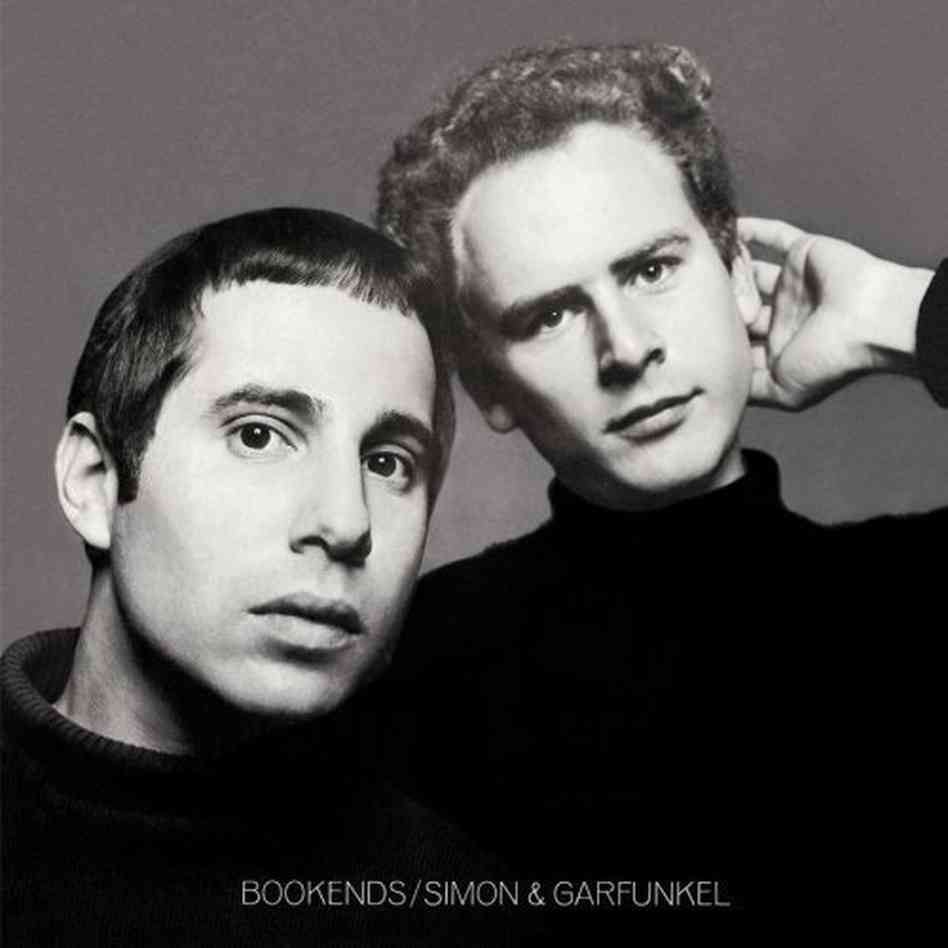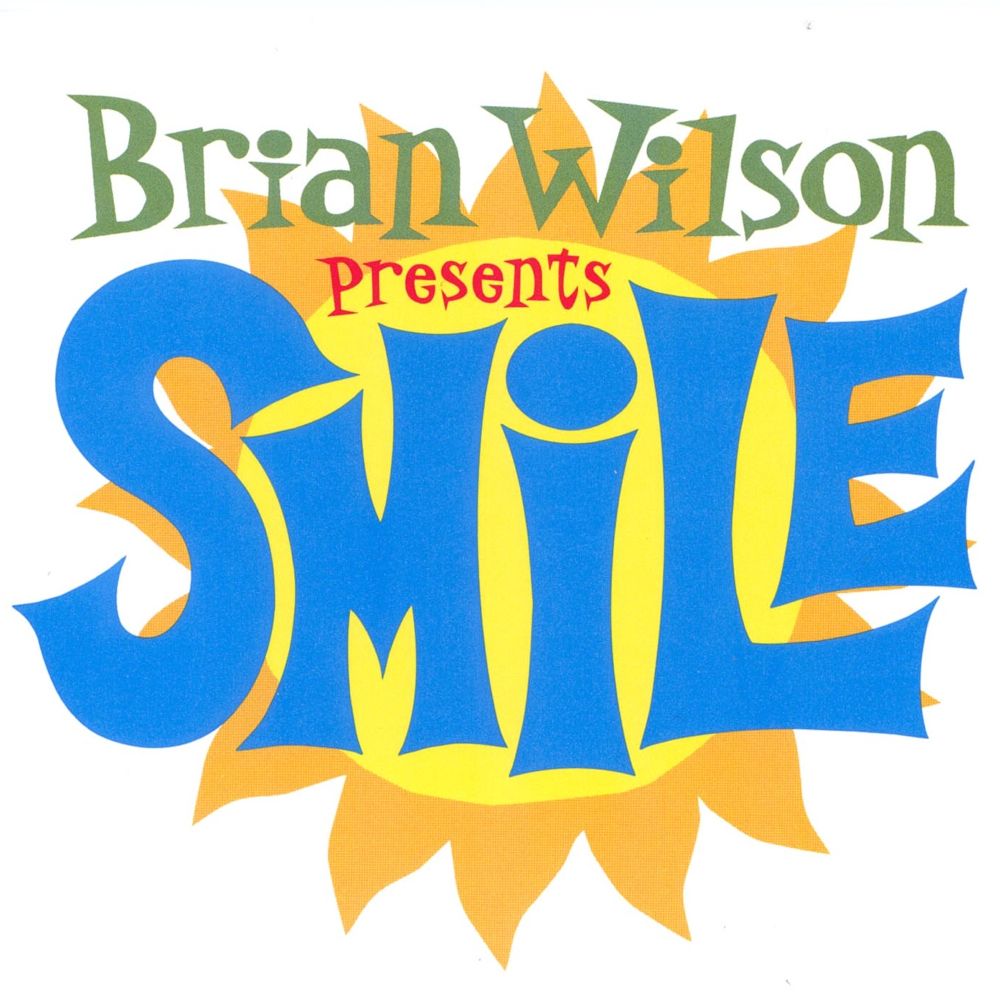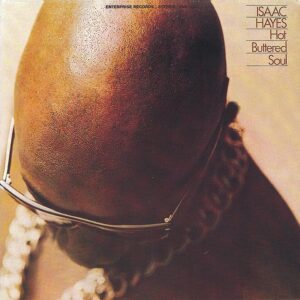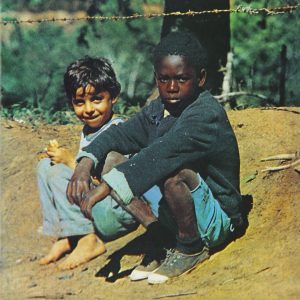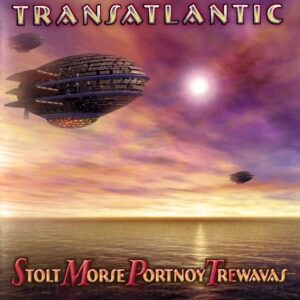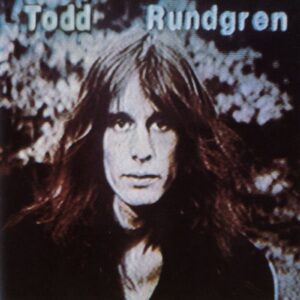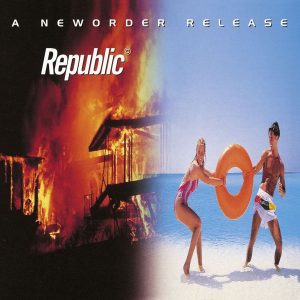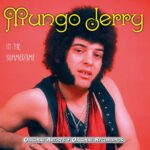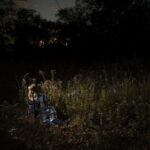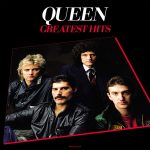
Mike Scott was born in Edinburgh, the son of an English teacher. Scott’s interest in literature is clearly visible in his catalogue, but his life was changed when he bought the single ‘Last Night in Soho’ by Dave Dee, Dozy, Beaky, Mick & Tich at the age of ten. At high school he played music inspired by Bowie, The Beatles, and Dylan but at university he discovered the burgeoning punk scene, enjoying The Clash and starting a fanzine about Patti Smith.
Scott made his first recordings as The Waterboys in late 1981, while still a member of the band Another Pretty Face. Scott was the only musician on those initial first recordings, and effectively the band is a vehicle for Scott – he’s the only official member on 1993’s Dream Harder. Despite Scott’s dominance of the band, other talented musicians have passed through The Waterboys; keyboardist Karl Wallinger went onto success with World Party, while fiddler Steve Wickham is prominent on the band’s Irish folk records. Saxophonist Anthony Thistlethwaite and drummer Kevin Wilkinson were also members during the band’s pivotal early years. Scott believes that The Waterboys hold the record for the rock band with the most members ever, with more than 85 musicians passing through the band.
The early Waterboys played what Scott termed “The Big Music” – lush anthems with religious and spiritual overtones. 1988’s Fisherman’s Blues switched into Irish music – it’s easy to assume that Scott is Irish given his musical similarities to Van Morrison and early U2. Scott broke up the band after 1993’s rock-oriented Dream Harder, and released two solo albums, but reunited the band for 2000’s A Rock in the Weary Land. The band are still active, releasing more albums in the 21st century than in their 1980s and 1990s heyday, but for now I’m just reviewing their initial run of records.
The Waterboys Album Reviews
The Waterboys | A Pagan Place | This Is the Sea | Fisherman’s Blues | Fisherman’s Blues Part 2 | Room to Roam | Dream Harder | Bring ‘Em All In (Mike Scott) | Still Burning (Mike Scott) | A Rock in the Weary Land | Universal Hall | Book of Lightning | An Appointment with Mr Yeats | Modern Blues | Out of All This Blue | Where the Action Is | Good Luck, Seeker
The Waterboys

1983, 7/10
Surprisingly, The Waterboys’ first record of “big music” was mostly recorded solo by Mike Scott. Six of its eight tracks were recorded alone by Scott in the Redshop Studio in London, with the help of a drum machine, before he’d recruited other members for the band. It’s a formative effort – some of these songs would sound better with a drummer, and some of these songs meander without enough hooks – but Scott’s clearly a charismatic frontman and strong singer. His one-man band is often impressive, with his work on piano and lead guitar. Scott was joined by saxophonist and multi-instrumentalist Anthony Thistlethwaite for ‘A Girl Called Johnny’, and a rhythm section joined in time for the U2 answer song ‘I Will Not Follow’.
‘A Girl Called Johnny’, about Patti Smith, was the lead single, but the opening ‘December’ is the most evocative song. It’s a showcase for Scott’s Danelectro 12-string guitar, with two lead parts and a rhythm part. There are punchy pop/rock tracks like ‘I Will Not Follow’ and ‘It Should Have Been You’, but the mood of The Waterboys is dominated by the moody epics at the end of each LP side – ‘Gala’ and ‘Savage Earth Heart’.
The Waterboys is a promising debut; the band would build on it over their next two releases.
A Pagan Place

1984, 7.5/10
The first sessions for A Pagan Place took place in November 1982, before the first album’s ‘A Girl Called Johnny’ was recorded. Keyboardist and backing vocalist Karl Wallinger joined The Waterboys in time for the second set of sessions in September 1983, while Roddy Lorimer plays trumpet on the title track. With a full band in place, A Pagan Place does a better job of capturing “The Big Music” than their debut; there’s even a song of the same title as a declaration of purpose. Spiritual and literary themes are again prevalent – the very first line of album is drawn from C.S. Lewis’ The Last Battle (“Bye-bye shadowlands/The term is over/And all the holidays have begun”).
While it shows growth, it’s still not completely engrossing. ‘The Thrill Is Gone’ clearly owes a debt to Van Morrison’s ‘Madame George’ from Astral Weeks. The second side is stronger – ‘The Big Music’ is followed by the excellent ‘Red Army Blues’, a lengthy tale of a Russian soldier in World War II. Best of all is the title track, which adds a Celtic folk ambience to the album’s anthemic sound and it’s all the better for it. I have the 2002 remaster on CD, which adds a couple of interesting bonus tracks – there’s a cover of Nikki Sudden’s ‘Cathy’, while ‘Some Of My Best Friends Are Trains’ is dropped into the middle of the original track-listing. With its funky guitar and handclaps, it’s an odd fit musically for the album, but it’s also excellent – “They all want to look like Richard Hell and Tom Verlaine” is a great chorus hook line.
A Pagan Place is another step forward from The Waterboys; their two most acclaimed albums were just around the corner.
This Is The Sea

1985, 8/10
During The Waterboys’ first tour of North America, Scott purchased two huge hard-bound books. He spent two months writing in his apartment, culling 40 songs down to the nine songs that appear on This Is The Sea. It’s the last Waterboys’ album recorded in “The Big Music” style and represents more progress. It’s not perfect; one terrific song overshadows the rest of the record, and the production often sounds a little hollow with little bass presence. In particular, rockers like ‘Be My Enemy’ suffer from the production – sweeping ballads like ‘Trumpets’ and the title track work well. Fiddler Steve Wickham joined the band in time to record ‘The Pan Within’.
That terrific song that overshadows the rest of the record is ‘The Whole Of The Moon’ – it infuses Scott’s searching lyrics with romanticism, and backs them with a great pop melody. There are also some terrific arrangement touches – the galloping piano riff, the trumpet parts from Roddy Lorimer, and the eerie backing vocals from Max Edie. Rockers like ‘Medicine Bow’ are necessary for balance, but aren’t as good as the epics – ‘The Pan Within’ and the title track both range over six minutes, and both evoke Van Morrison’s Astral Weeks epics, although the latter also references Curtis Mayfield’s ‘People Get Ready’.
This Is The Sea is a good record, but ‘The Whole Of The Moon’ is easily its most transcendent moment.
Fisherman’s Blues

1988, 9.5/10
The Waterboys’ fourth album had a much longer gestation than any of their previous work – ‘World Party’ was written in 1985, while Karl Wallinger was still in the band, as a reaction to Live Aid. An exhaustive 6-CD box captures 121 songs from sessions between January 1986 and June 1988. The final 55-minute album almost feels like a compilation as a result, taking on everything from country on ‘Has Anybody Here Seen Hank?’ to echoing the band’s prior big music of ‘We Will Not Be Lovers’. But the predominant flavour is Irish folk, inspired by Steve Wickham bringing Scott to Dublin. Along with Scott and Wickham, the only other official member of the band at this point is Anthony Thistlethwaite.
The rock-oriented material is clustered near the beginning of the record – ‘World Party’ could have fitted onto This Is The Sea, and supplied the name of Wallinger’s post-Waterboys project. ‘We Will Not Be Lovers’ barrels along on the back of a ferocious violin riff from Wickham, while the opening title track is like a mission statement from Scott, turning his back on fame (“I wish I was a fisherman/Tumblin’ on the seas/Far away from dry land/And its bitter memories”). The folk material is also excellent – the seven minutes of ‘And a Bang on the Ear’ charmingly retell Scott’s romantic history, while ‘When Ye Go Away’ is a low-key classic. The cover of Van Morrison’s ‘Sweet Thing’ is outstanding while ‘The Stolen Child’ is a suitably grand finale, quoting Yeats, before the coda of ‘This Land Is Your Land’.
Fisherman’s Blues is an exceptional record, Scott drastically changing direction and succeeding as an Irish troubadour.
Fisherman’s Blues Part 2

2001, 8/10
This collection of outtakes from the Fisherman’s Blues sessions is confusingly named. There was a ton of material recorded during the era, but this compilation largely captures the group’s transition between their early “Big Music” and the rootsier sound that they journeyed towards. As such, This Is The Sea Part 2 or Sea-Fisherman Interzone would have been more useful titles. There’s a UK collection titled Too Close To Heaven from the same year – this US version adds an extra five tracks (although ‘Too Close to Heaven’ and ‘Higher In Time’ are included in two versions in the US version). While none of these individual songs are among the group’s best, it’s consistently good and it outshines most of The Waterboys’ original studio albums.
The most notable song is ‘Too Close To Heaven’. It’s memorable with its Icarus lyrics and sweeping feel. It’s also very similar to Prince’s Purple Rain, presumably the reason it was relegated to the vaults. ‘Higher In Time’ also recalls the band’s earlier work, although Wickham’s soulful violin is a great addition. Other songs explore roots genres – ‘Home in the Meadow’ is folk, using the ‘Greensleeves’ melody, ‘Good Man Gone’ is country, and, as the title suggests, ‘Blues For Your Baby’ is a bluesy rocker.
There was obviously a lot of strong material recording during the Fisherman’s Blues sessions – none of these songs are quite lost classics (particularly if ‘Too Close To Heaven’ is disqualified for its similarity to ‘Purple Rain’) but it’s consistently enjoyable nonetheless.
Room to Roam

1990, 6.5/10
It’s not surprising that Scott dipped back into Irish folk for the follow-up to Fisherman’s Blues. But while Fisherman’s Blues was eclectic and adventurous, Room to Roam is largely a straightforward Irish folk record. Scott’s lyrics are also much less interesting than before; the restless spiritual searcher is replaced by domestic complacency. Lead single ‘How Long Will I Love You’ opens with a lovestruck couplet adapted from The Beach Boys’ ‘God Only Knows’; “How long will I love you?/As long as stars are above you/And longer if I can.” As on Fisherman’s Blues Steve Wickham is a key contributor here, although he left the band before the record was released, while Anthony Thistlethwaite provide continuity from the earliest line-ups of the band.
Room to Roam is fast moving, packing 18 tracks into 42 minutes, and it’s tuneful. But it often feels too pedestrian for Scott, with a plethora of sprightly folk songs like ‘Spring Comes To Spiddal’ and ‘A Man Is In Love’. The cover of the traditional tune ‘The Raggle Taggle Gypsy’, a live version of which was released as a b-side during the Fisherman’s Blues era, is successful, but the most significant tune is the six-minute rocker ‘A Life Of Sundays’.
Room to Roam is a competent record. If you’re looking for some more of Fisherman’s Blues sound, however, I’d suggest exploring the expanded edition of Fisherman’s Blues or the outtakes collection Too Close To Heaven first.
Dream Harder

1993, 7/10
When Mike Scott signalled his intention to pursue a rock-oriented direction, Steve Wickham left and the band was dissolved. On Dream Harder, Scott is the only official Waterboy, backed by New York session musicians. Scott’s making an effort to update his sound for the 1990s, as the string of the riff-rockers at the beginning indicates. The spiritual themes are back- there’s the ‘The Return of Pan’, while on single ‘Glastonbury Song’ Scott sings “I just found God where He always was.” Dream Harder is unfocused, but there’s enough of Scott’s signatures to make it enjoyable for long-term fans.
The best song returns to another Scott standby – the poetry of W.B. Yeats. The synth riff on ‘Love and Death’ has dated, but it’s a gorgeous melody. Closer ‘Good News’ also recalls their 1980s work. There’s a weak stretch in the middle with the plodding ‘Corn Circles’ and the reggae of ‘Suffer’. Scott’s a good enough writer to pull off the monologue ‘The Return of Jimi Hendrix’, imagining the famous guitarist reborn in Ireland for a day. Riff-rockers aren’t Scott’s strength but the opening stretch is enjoyable, particularly ‘Glastonbury Song’ and ‘The Return of Pan’.
Dream Harder has its weak and dated moments, but it’s a credible effort exploring new territory for Scott. It’s the last record from The Waterboys’ initial run – Scott would release two solo albums, then reform the band in 2000.
Bring ‘Em All In (Mike Scott) | Still Burning (Mike Scott) | A Rock in the Weary Land | Universal Hall | Book of Lightning | An Appointment with Mr Yeats | Modern Blues | Out of All This Blue | Where the Action Is | Good Luck, Seeker

Scott’s continued to release albums regularly, as a solo artist and as The Waterboys. Albums like A Rock in the Weary Land and An Appointment with Mr Yeats have been well received. I’m not planning to cover them at this stage. I have given An Appointment with Mr Yeats a quick spin on Spotify and enjoyed it – there was still magic in Wickham’s wild fiddle and Scott’s voice.
10 Best Waterboys Songs
The Whole Of The Moon
And a Bang On the Ear
We Will Not Be Lovers
December
When Ye Go Away
A Pagan Place
Fisherman’s Blues
Love and Death
This Is The Sea
A Life Of Sundays
Return to 1980s Album Reviews
Related Pages
Review Pages
Read about the discographies of musical acts from the 1960s to the present day. Browse this site's review archives or enjoy these random selections:
Blog Posts
I add new blog posts to this website every week. Browse the archives or enjoy these random selections:

